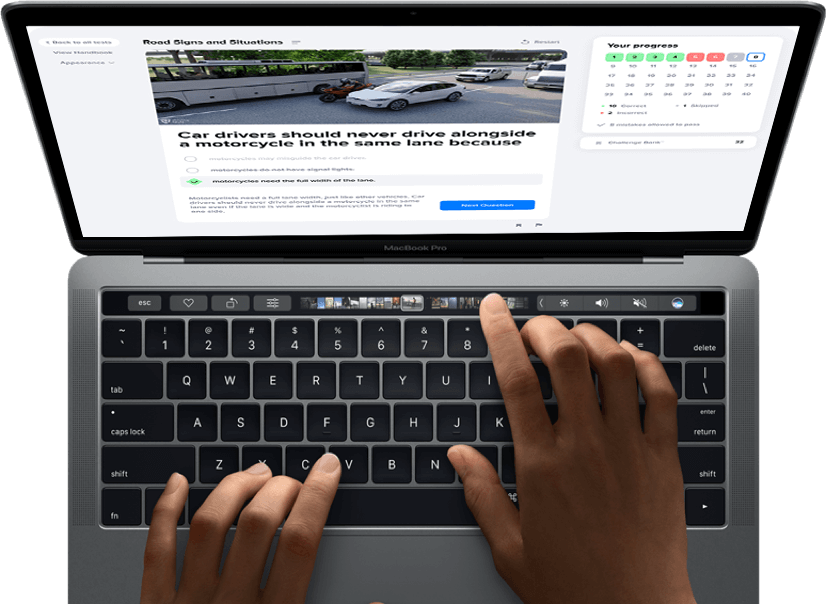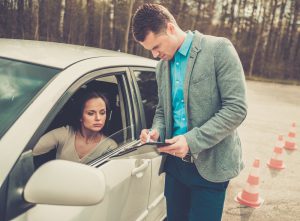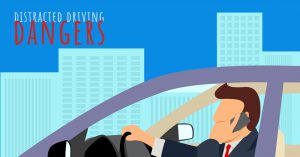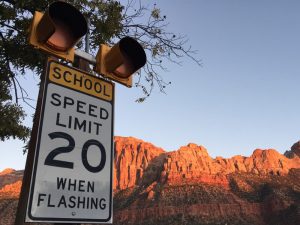Contents
- Always check your blind spots
- Be extra cautious when passing
- Remember that motorcycles react more quickly than cars
- Weather warning
- Night-riding can be treacherous for motorcyclists
- Stay in your lane
- Inform motorcyclists of your intention to turn
- Intersections are danger zones
- Watch for turning motorcycles
- Take a second look at left-turns
According to the National Highway Traffic Safety Administration, more than 4,956 motorcyclists were killed in 2015. While some of these accidents were single vehicle accidents, many involved automobiles. As drivers of cars, trucks, vans, and SUVs, we have the responsibility not only to share the road, but also to take proactive measure to increase the safety of motorcycle riders who we encounter on our way.
There has been a notable increase in the number of motorcycles on the road in recent years, partly caused by increasing gas prices. Many drivers have traded in their cars for super-efficient motorcycles in an effort to decrease their fuel consumption. This movement has led to a huge number of inexperienced motorcycle riders, many of whom become involved in accidents with cars. Drivers must be aware that motorcycles can be encountered on all types of roadway.
Many accidents involving both motorcycles and automobiles are the fault of the automobile driver. In addition to being constantly aware that a motorcyclist may be in close proximity to your vehicle, here are ten things that you can do to help keep motorcyclists and yourself safe:
10 Things Every Driver Should Know About Sharing the Road with Motorcycles
- 1
Always check your blind spots!
This is possibly the number one reason for accidents involving motorcycles and cars. Motorcycles are smaller than other vehicles and can be even more difficult to spot while merging or changing lanes. The shape of motorcycle and rider is also more likely to blend into the images you see in your rear-view and side-view mirrors than that of a large automobile. Take your time before merging and devote several seconds to searching each of your car’s blind spots before proceeding with your intended maneuver. Check this video guide to make sure your side-view mirrors are set properly:
- 2
Be extra cautious when passing.
It is lawful to pass a motorcycle in the same way you would an automobile, assuming that you are driving on a section of roadway that allows passing; however, the gust of wind that results from your increase in speed as you pass could cause the motorcycle to become unstable and blow the rider off of the road. Make sure to signal your intention to pass a slower motorcyclist by using your left turn signal. Always make sure you are several car lengths ahead of the motorcycle before returning to your lane.
- 3
Remember that motorcycles react more quickly than cars.
Make sure that you maintain an adequate following distance behind motorcycles. Rear-ending a motorcycle can be fatal to the rider, particularly if you drive a large, heavy vehicle.
- 4
Weather warning
Weather warning: bad weather has more drastic affects on motorcycle riders than it does on automobile drivers. Rain and winter weather in particular can make it almost impossible for motorcyclist to continue to travel. Windy conditions can make it difficult for motorcyclists to control their vehicle on the road. Also remember that weather conditions often reduce your own visibility and may cause motorcycles to be more difficult to see.
- 5
Night-riding can be treacherous for motorcyclists.
Help riders stay safe after dark by increasing your following distance, ensuring that your high-beams are turned off when you notice an approaching motorcycle, and refraining from passing.
If you are driving with your high-beams on, you must dim them at least 500 ft from any oncoming vehicle including a motorcycle![motorcycle]()
- 6
Stay in your lane.
Motorcycles are legally entitled to their own lane of traffic. In no situation are you allowed to drive your automobile in the same lane and in close proximity to a motorcycle. No matter how small these vehicles are or how much extra room that there appears to be, sharing a single lane with a motorcycle is a recipe for an accident and illegal.
- 7
Inform motorcyclists of your intention to turn.
Initiate your turn signal sooner than you normally would when you know there is a motorcycle driving behind you. Not only is this courteous, it helps to reduce pile-ups involving motorcycles.
- 8
Intersections are danger zones.
Many vehicle accidents that involve both automobiles and motorcycles occur at intersections, particularly blind intersections. Always follow the safety protocol for intersections every single time that you approach one: come to a complete halt, view and obey posted traffic signs and signals, look both ways for approaching traffic, and proceed slowly.
- 9
Watch for turning motorcycles.
Self-cancelling turn signals did not become standard on motorcycles until the late 1970s. There are still many motorcycles on the road today that do not have the self-cancelling turn signals that we are now accustomed to. If you notice that a motorcycle is driving with an activated turn signal for a abnormal distance, increase your following distance so that you have time to react whenever the rider does decide to turn.
- q
Take a second look at left-turns.
Before you cross a lane or lanes of traffic to turn left, take a second look for approaching motorcycles. Vehicle accidents involving the collision of a left-turning car and an approaching motorcycle can be very severe, often because the motorcycle t-bones the car while it is mid-way through the left turn.
Remember that there is no such thing as a fender-bender for a motorcycle rider. They are completely exposed. Most multi-vehicle accidents involving motorcycles cause serious or fatal injuries to the riders. It is your responsibility, as the driver of an automobile, to take caution and do everything in your power to prevent motorcycle accidents.






